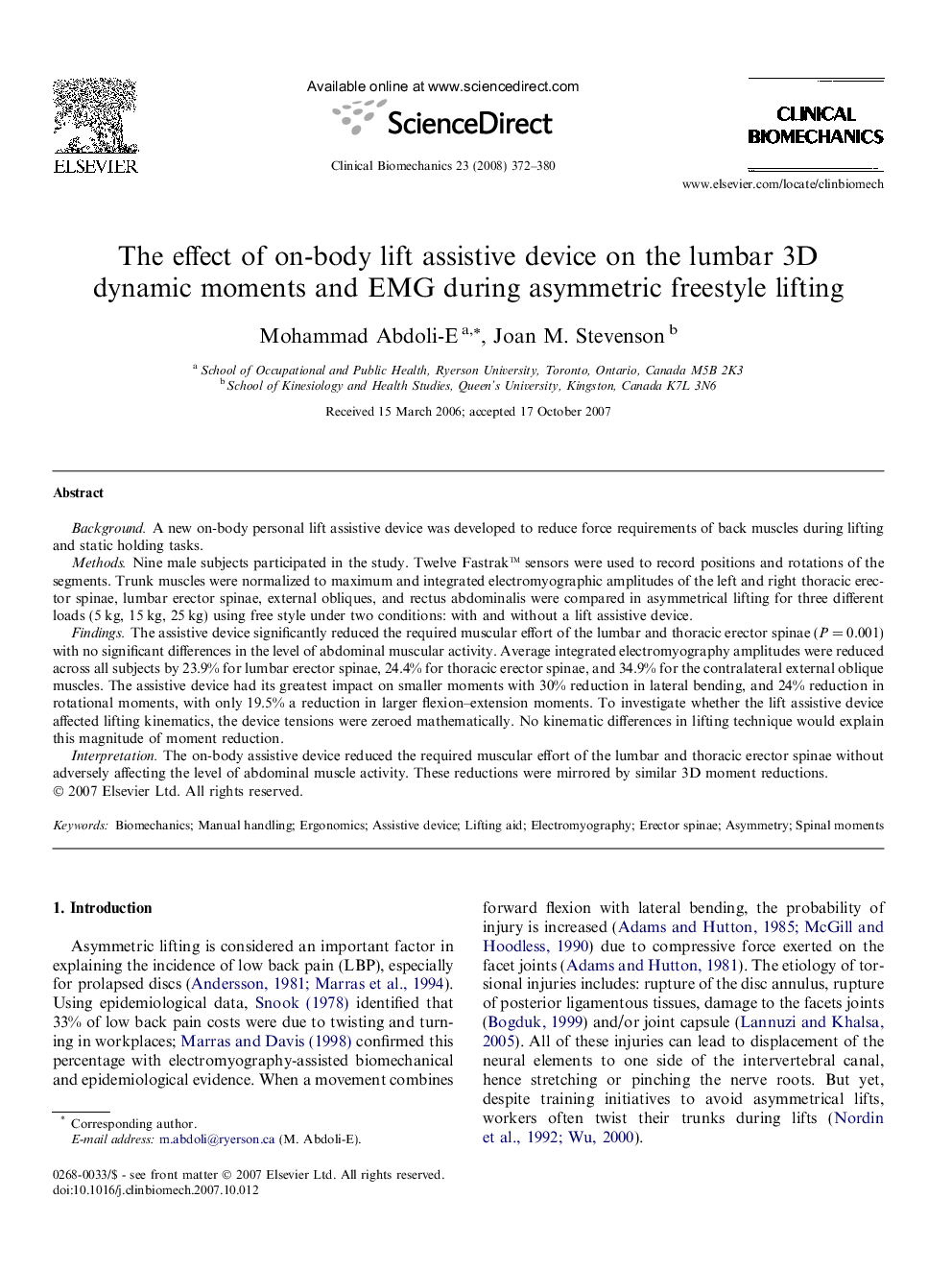| Article ID | Journal | Published Year | Pages | File Type |
|---|---|---|---|---|
| 4051591 | Clinical Biomechanics | 2008 | 9 Pages |
BackgroundA new on-body personal lift assistive device was developed to reduce force requirements of back muscles during lifting and static holding tasks.MethodsNine male subjects participated in the study. Twelve Fastrak™ sensors were used to record positions and rotations of the segments. Trunk muscles were normalized to maximum and integrated electromyographic amplitudes of the left and right thoracic erector spinae, lumbar erector spinae, external obliques, and rectus abdominalis were compared in asymmetrical lifting for three different loads (5 kg, 15 kg, 25 kg) using free style under two conditions: with and without a lift assistive device.FindingsThe assistive device significantly reduced the required muscular effort of the lumbar and thoracic erector spinae (P = 0.001) with no significant differences in the level of abdominal muscular activity. Average integrated electromyography amplitudes were reduced across all subjects by 23.9% for lumbar erector spinae, 24.4% for thoracic erector spinae, and 34.9% for the contralateral external oblique muscles. The assistive device had its greatest impact on smaller moments with 30% reduction in lateral bending, and 24% reduction in rotational moments, with only 19.5% a reduction in larger flexion–extension moments. To investigate whether the lift assistive device affected lifting kinematics, the device tensions were zeroed mathematically. No kinematic differences in lifting technique would explain this magnitude of moment reduction.InterpretationThe on-body assistive device reduced the required muscular effort of the lumbar and thoracic erector spinae without adversely affecting the level of abdominal muscle activity. These reductions were mirrored by similar 3D moment reductions.
